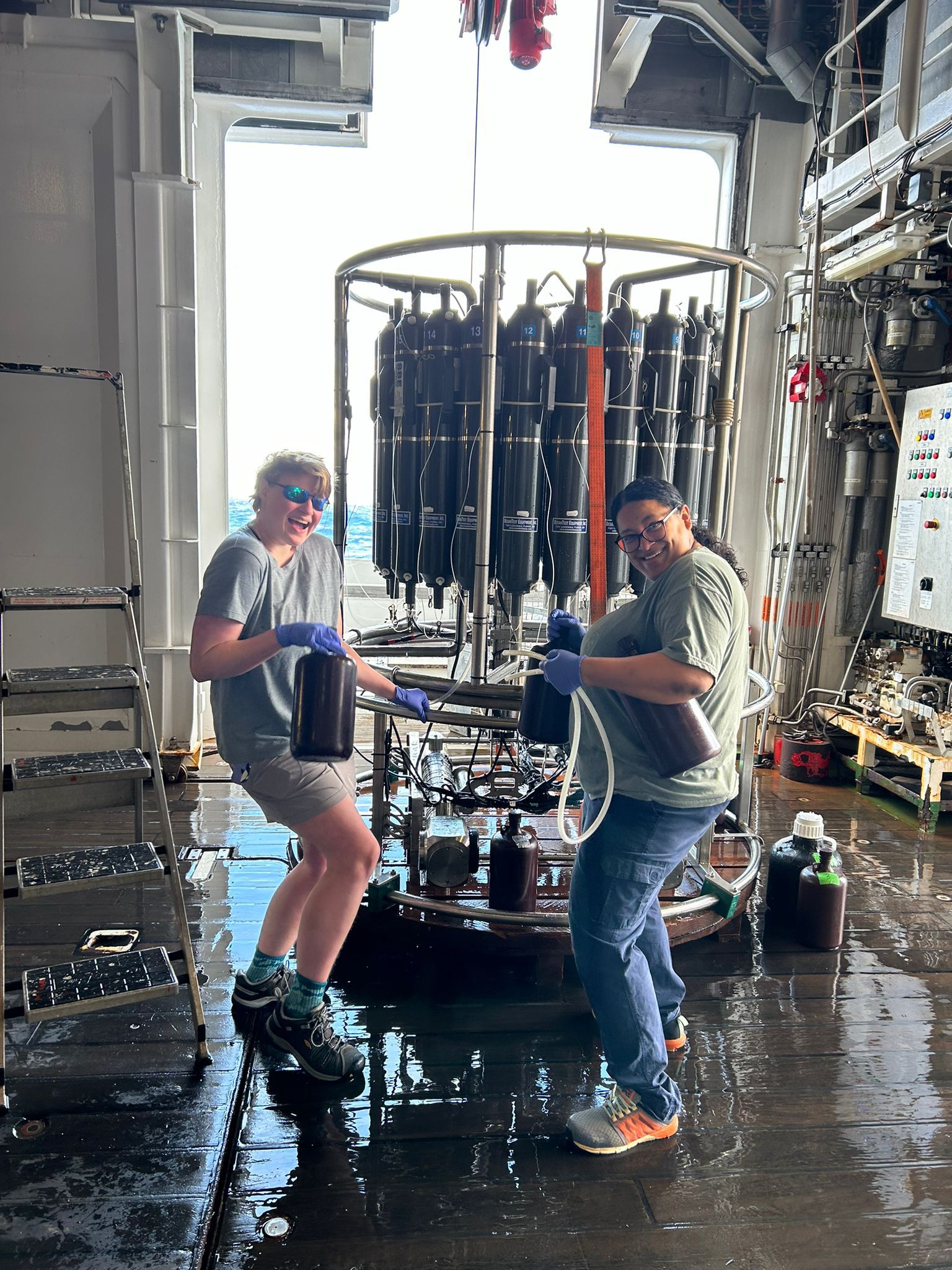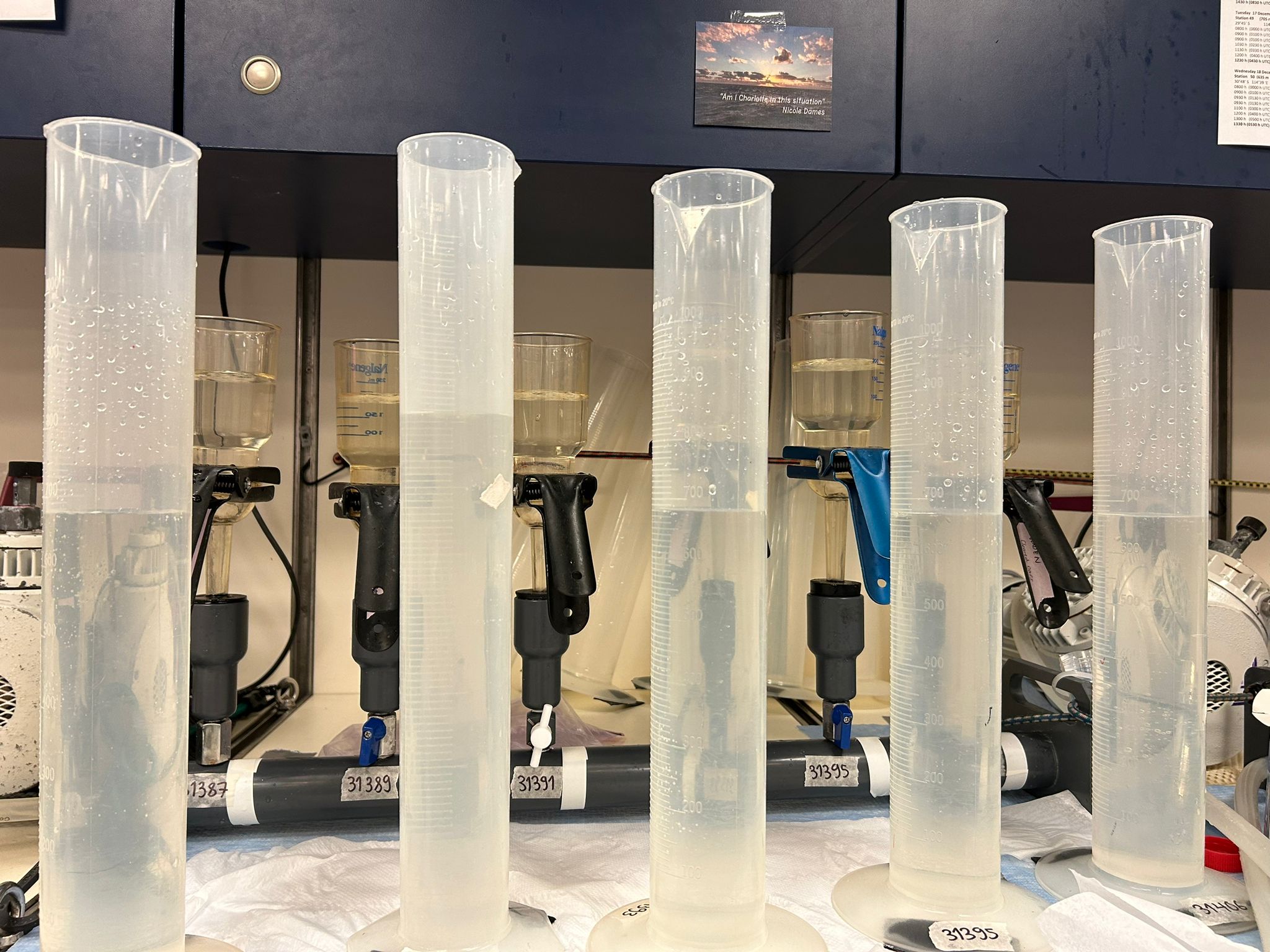We have discussed phytoplankton quite a bit on this blog, from their part in marine snow creation to their potential reactions to ocean alkalinity enhancement. Their importance to the ocean—and the planet—is hard to overstate, and there are many aspects of their lives (and deaths) to explore.
While our schedules have been chaotic this cruise, the daily lives of phytoplankton are usually more regular. Since they are dependent on sunlight, their daily activities, such as DNA replication and cell division, often follow a diel pattern. By taking measurements throughout the day-night cycle, we can learn about their growth rates. Growth rates are important, as the speed at which phytoplankton cells divide impacts their abundance, which in turn is a critical consideration for photosynthetic rates and food web interactions.
Postdoctoral scientists Nicole Dames and Charlotte Eckmann, from the Marine Biological Laboratory in Woods Hole, Massachusetts USA, are particularly interested in the growth rates of Prochlorococcus, a ubiquitous phytoplankton genus that is especially important in low-nutrient open ocean waters. Previous work in the Indian Ocean’s Bay of Bengal has shown that Prochlorococcus cells divide up to three times a day—among the highest reported growth rates for this group across all oceans [1]. Nicole and Charlotte want to see if the same high growth rates are seen in the southern part of the Indian Ocean as well, or if the Prochlorococcus there follow a more laidback schedule.

To do this, they took surface seawater samples every 1-2 hours across a three-day period. This sampling included filtering seawater for DNA extraction, which will allow them to pinpoint the exact Prochlorococcus ecotype(s) (a sub-species level of classification) present in the water. They also added a fixative to seawater samples for flow cytometry analysis, which will allow for an accurate count of the Prochlorococcus cells and an indication of which growth phase the cells are in—this data will allow them to calculate growth rates.


Prochlorococcus cells are less than a micrometer long, but as they are likely the most abundant photosynthetic organism on Earth, they have an outsized impact on carbon cycling and ocean food webs. Learning more about their growth, especially in under-sampled regions such as the South Indian Ocean, is important for understanding these global processes. The daily lives of tiny phytoplankton can have huge implications!
Reference
- Grone, J., Poirier, C., Abbott, K., Wittmers, F., Jaeger, G. S., Mahadevan, A., & Worden, A. Z. (2024). A single Prochlorococcus ecotype dominates the tropical Bay of Bengal with ultradian growth. Environmental Microbiology, 26(3), e16605.
By Charlotte Eckmann